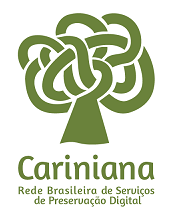Marcadores Territoriais da Fé Popular em Ponta Grossa: resistência social e cultural
DOI:
https://doi.org/10.5433/2447-1747.2021v30n1p227Palavras-chave:
Fé popular, Marcadores territoriais, Microterritórios, Fenomenologia espacial.Resumo
Este artigo tem por objetivo geral discutir os marcadores territoriais e geossímbolos da fé popular que subsistem em meio às modernidades múltiplas do espaço urbano de Ponta Grossa. Os municípios do Paraná Tradicional possuem suas histórias atreladas à expropriação de terras indígenas com a escravização dos nativos e de negros trazidos do continente africano, na consolidação de atividades econômicas ligadas à agropecuária. Hoje, percebe-se que a sociedade local resgata para o quotidiano moderno algumas características de suas origens no sentir-pensar-construir a cidade. Mesmo sendo Ponta Grossa a quarta maior cidade do Estado do Paraná, portanto com considerável grau de urbanização e modernidade, são preservados pela comunidade alguns marcadores territoriais que remetem a uma outra cidade, não perfeitamente alinhada às geoestruturas do capital. Entre olhos d’água, jazigos, santos canônicos e não canônicos, formata-se um corpus religioso-espiritual, dentro de uma relação secreta/emocional com o espaço. Inobstante, desde o método fenomenológico de análise, percebe-se que estes interditos espaciais personificam uma estratégia, mesmo que inconsciente, de resistência às imposições totalizantes da modernidade. Conclui-se, portanto, que os marcadores territoriais da fé popular descortinam a multiplicidade do urbano na medida que ressignificam a modernidade por meio de outras racionalidades envolvidas na formatação espacial.Downloads
Referências
ALMEIDA SILVA, A. de. Territorialidades e identidade dos coletivos Kawahib da Terra Indígena Uru-Eu-Wau-Wau em Rondônia: “Orevaki Are” (reencontro) dos “marcadores territoriais”. 2010, 301 f. Tese (Doutorado em Geografia) – UFPR/SCT/DG/PPGMDG, Curitiba, 2010.
BOLLNOW, O. O homem e o espaço. 9. ed. Curitiba: Editora UFPR, 2008. 327 p.
BOURDIEU, P. Razões Práticas: Sobre a Teoria Da Ação. 9. ed. Campinas: Papirus Editora, 2008. 224 p.
CARNEIRO JR., A. Lendas e Contos Populares do Paraná. Curitiba: Secretaria de Estado da Cultura, 2005. 244 p.
CASSIRER, E. A filosofia das formas simbólicas. 1. ed. São Paulo: Martins Fontes, 2001. 416 p.
COLUCCIO, F. Las devociones populares argentinas. Buenos Aires, Nuevo Siglo, 1995.
CORREA, Roberto Lobato. O espaço urbano. São Paulo: Ática. 2004.
DI MÉO, G. Introduction à la géographie sociale. Paris: Armand Colin, 2014, 190 p.
ELIADE, Mircea. Tratado de Historia de las Religiones. Madrid: Ed. Cristiandad, 2000.
ESCOBAR, A. Sentipensar com la tierra. Nuevas lecturas sobre desarrollo, território y diferencia. Medellín: Ediciones UNAULA, 2014. 184 p.
FERNANDES, J. C. Corina Portugal: História de Sangue & Luz. Ponta Grossa: Gráfica Planeta Ltda, 1999. 152 p.
FOUCAULT, M. Vigiar e punir: nascimento da prisão. 20. ed. Petrópolis: Vozes, 1999. 288 p.
FONTOURA, C. (Micro)territorialidades: metáfora dissidente do social. Terr@ Plural, Ponta Grossa, v.6, n.2, p. 199-214, jul./dez. 2012.
GIDDENS, A. Modernidade e identidade. Rio de Janeiro: Jorge Zahar. 2002. 224 p.
GUATTARI, F. Revolução Molecular. 3. ed. Pulsações políticas do desejo. São Paulo: Brasiliense. 1987.
JUNG, C. G. O inconsciente pessoal e o inconsciente coletivo. Rio de Janeiro: Vozes, 2000.
JUNG, C. G. O Homem e seus Símbolos. 3 ed. Rio de Janeiro: HarperCollins, 2016. 418 p.
MATHIEU, N. Le concept de mode d’habiter à l’épreuve du développement durable. l’Académie d'agriculture de France. Hal sciences d l’homme et de la Société, França – Paris, 2010. Disponível em: <https://halshs.archives-ouvertes.fr/halshs-00732262>.
MAUÉS, R. H. Um aspecto da diversidade cultural do caboclo amazônico: a religião. Estudos avançados, v. 19, n. 53, p. 259-274, 2005. Disponível em: https://www.scielo.br/pdf/ea/v19n53/24092.pdf.
PETRUSKI, M. R. Eu oro, tu oras, eles oram para Corina Portugal. Revista Brasileira de História das Religiões. ANPUH, Ano IV, n. 12, Janeiro 2012. <Disponível em: http://www.dhi.uem.br/gtreligiao/pdf11/07.pdf>
RAFFESTIN, C. De l'ideologie à l'utopie ou la pratique du géographe. Geographica Helvetica. v. 41, n. 3, 1986, p. 133-136. (Disponível em http://www.geogrhelv.net/41/126/1986/gh-41-126-1986.pdf).
SIMMEL, G. A metrópole e a vida mental. In: VELHO, O. G. (org.) O fenômeno urbano. 2. ed. Rio de Janeiro: Zahar Editores, 1973. p. 11-25
SPIVAK, G. C. Pode o subalterno falar? Tradução de Sandra Regina Goulart Almeida, Marcos Pereira Feitosa, André Pereira Feitosa. Belo Horizonte: Editora UFMG, 2010. 133 p.
ZULIAN, R. W. Entre o aggiornamento e a solidão: práticas discursivas de D. Antônio Mazzarotto, primeiro bispo diocesano de Ponta Grossa - PR (1930-1965). 2009. 429 f. Tese. (Doutorado em História) - Universidade Federal de Santa Catarina, Florianópolis, 2009.
WELTER, T. O Profeta São João Maria continua encantando no meio do povo. 2007. 338 f. Tese (Doutorado em Antropologia Social) - Universidade Federal de Santa Catarina, Florianópolis, 2007.
Downloads
Publicado
Como Citar
Edição
Seção
Licença
Copyright (c) 2021 GEOGRAFIA (Londrina)

Este trabalho está licenciado sob uma licença Creative Commons Attribution-NonCommercial 4.0 International License.
Os(as) autores(as) mantêm os direitos autorais, com o trabalho simultaneamente licenciado sob a Creative Commons Atribuição-Não Comercial 4.0 Internacional. Esta licença permite que terceiros distribuam, remixem, adaptem e desenvolvam o material em qualquer meio ou formato apenas para fins não comerciais, atribuindo o devido crédito de autoria e publicação inicial neste periódico
A revista se reserva o direito de efetuar, nos originais, alterações de ordem normativa, ortográfica e gramatical, com vistas a manter o padrão culto da língua e a credibilidade do veículo. Respeitará, no entanto, o estilo de escrever dos autores. Alterações, correções ou sugestões de ordem conceitual serão encaminhadas aos autores, quando necessário.

Esta obra está licenciada com uma licença Creative Commons Atribuição-Não comercial 4.0 Internacional.

















